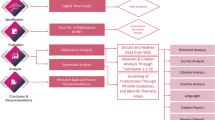Abstract
This article discusses how Mobile Application Clusters can be developed through competitions for innovative applications. The Smart City services that are developed in competitions benefit both the Mobile Application Cluster and the citizens. The function of the competition mechanism to encourage the development of new mobile applications utilizing Open Data is described with examples from the Helsinki Region. Porter’s model of determinants of national competitive advantage is used as a framework to describe the forces driving the ongoing developments towards the Mobile Application Cluster. In particular the paper explores the interaction between the cluster determinants of Porter’s model with regard to the externalities made by the linkages between the parties in the emerging cluster. In the two competitions for Open Data applications that the paper discusses innovation is supported by a policy-like instrument: an urban competition on open data, which is driven forward through the Living Labs approach to innovation. The two competitions launched in the Helsinki Region are aimed at developing mobile applications by utilizing open data. The paper shows how a Living Lab functions as an innovation intermediary where the competitions are utilized in developing a Smart City.



Similar content being viewed by others
Notes
Helsinki Region, as used in this paper, needs to be distinguished from the larger territory of the Helsinki–Uusimaa region (province) which is governed by its council as a regional authority.
For a list of the Living Labs in Brazil and China that are members of the European Network of Living Labs (ENoLL), please see www.openlivinglabs.eu; for the Living Labs of Southern Africa see www.llisa.org.za and www.llisa.net.
The European Union has chosen Living Labs as one of the main tools to bring the objectives of the CIP, FP, and other programs to reality (EU 2009). European Union Brochure, 2009, online at http://ec.europa.eu/information_society/activities/livinglabs/docs/brochure_jan09_en.pdf
References
Sargsyan G (2011) Social economic impact of Open Service Innovation (OSI), Final report for DG INFSO Study SMART2009-0077
Työ-ja Elinkeinoministeriö (2010) Demand and user-driven innovation policy, framework and action plan, Publications of the Ministry of Employment and the Economy, August 2010
Eriksson M, Niitamo VP, Kulkki S, Hribernik KA (2006) Living Labs as a Multi-Contextual R&D Methodology. The 12th International Conference on Concurrent Enterprising: Innovative Products and Services through Collaborative Networks, ICE2006. Milan, Italy
Nonaka I, Toyama R, Konno N (2000) SECI, Ba and leadership: a unified model of dynamic knowledge creation. Long Range Planning 33(1):5–34
Følstad A (2008) Living labs for innovation and development of information and communication technology: a literature review. Special issue on living labs. The Electronic Journal for Virtual Organizations and Networks 10
Følstad A (2008) Towards a living lab for the development of online community. Special issue on living labs. The Electronic Journal for Virtual Organizations and Networks 10
Almirall E (2008) Living Labs and innovation, roles and applicability. Special Issue on Living Labs. The Electronic Journal for Virtual Organizations and Networks, 10
Helsinkiregion.fi http://www.helsinginseutu.fi/hki/hs/The+Region+of+Helsinki/City+information+and+statistics/Helsinki+Region+Statistics. Accessed 9 September 2011
Poikola A, Kola P, Hintikka KA (2011) Public Data, an introduction to opening information resources, Finnish Ministry of Transport and Communications, April 2011, p 24
Katzy B, Klein S (2008) Editorial introduction, special issue on living labs. The Electronic Journal for Virtual Organizations and Networks 10
Schaffers H, Cordoba MG, Kallai T, Hongisto P, Merz C, Van Rensburg J (2007) Exploring business models for open innovation in rural living labs. 13th International Conference on Concurrent Enterprising, Sophia-Antipolis, France
Ballon P, Pierson J, Delaere S (2005) Test and experimentation platforms for broadband innovation: examining European practice. The 16th European Regional Conference by the International Telecommunications Society, Porto, Portugal
Oliveira A, Fradinho E, Caires R, Oliveira J, Barbosa A (2006) From a successful regional information society strategy to an advanced living lab in mobile technologies and services, Proceedings of the 39th Hawaii International Conference on Systems Sciences, IEEE, p 5
Santoro R, Marco C (2009) Living labs in open innovation functional regions. Proceedings of the 15th International Conference on Concurrent Enterprising 2009, Leiden. The Netherlands
Fahy C, Ponce de Leon M, Ståhlbröst A, Schaffers H, Hongisto P (2007) Services of Living Labs and Their Networks. In: eChallenges 2007, Den Haag, Netherlands
Schaffers H, Guzman JG, Merz C (2008) In action research approach to rural living labs innovation. In: eChallenges 2008, Stockholm, Sweden
Porter ME (1990) The competitive advantage of nations, Harvard Business Review, March–April
Porter ME (2000) Location, competition, and economic development: local clusters in a global economy. Econ Dev Q 14(1):15–34
Feser EJ (1998) Old and new theories of industry clusters. In: Steiner M (ed) Clusters and regional specialization on geography, technology and networks. Pion Limited, London
Martin R, Sunley P (2003) Deconstructing clusters: chaotic concept of policy panacea? J Econ Geogr 3(1):5–35
Chesbrough H (2003) Open innovation: the new imperative for creating and profiting from technology. Harvard Business Press, Boston
Freeman C (2002) Continental, national and sub-national innovation systems. Complementarity and economic growth. Res Pol 31(2):191–211
Munoz M, Rubio CG (2004) A new model for service and application convergence in B3G/4G networks. Wireless Comm IEEE 11(5):6–12
FGI, Finnish Game Industry, report 2010–2011 (2011) http://hermia-fi-bin.directo.fi/@Bin/34de04bc32ba0a5853ab27ba8245322f/1316871591/application/pdf/928763/Finnish%20Games%20Industry%202010-2011.pdf. Accessed 24 September 2011
Wired magazine at http://www.wired.co.uk/magazine/archive/2011/09/european-startups/helsinki. Accessed 11 September 2011
Mallat N, Rossi M, Tuunainen V, Öörni A (2008) An empirical investigation of mobile ticketing service adoption in public transportation. Personal and Ubiquitous Computing 12(1):57–65
Sonera (2011) Press release, http://www.medialab.sonera.fi/workspace/SoneraCNNPR.pdf. Accessed 24 September 2011
SAMPO (2011) http://www.sampopankki.fi/en-fi/Personal/online-services/Pages/mobile-services.aspx. Accessed 24 September 2011
Gabrielsson P, Gabrielsson M (2004) Globalizing internationals: business portfolio and marketing strategies in the ICT fields. Int Bus Rev 13(6):661–684
Wikipedia. http://en.wikipedia.org/wiki/MySQL. Accessed 02 October 2011
Luostarinen R, Gabrielsson M (2006) Globalization and marketing strategies of born globals in SMOPECs. Int Bus Rev 48(6):773–801
Author information
Authors and Affiliations
Corresponding author
Rights and permissions
About this article
Cite this article
Hielkema, H., Hongisto, P. Developing the Helsinki Smart City: The Role of Competitions for Open Data Applications. J Knowl Econ 4, 190–204 (2013). https://doi.org/10.1007/s13132-012-0087-6
Received:
Accepted:
Published:
Issue Date:
DOI: https://doi.org/10.1007/s13132-012-0087-6




